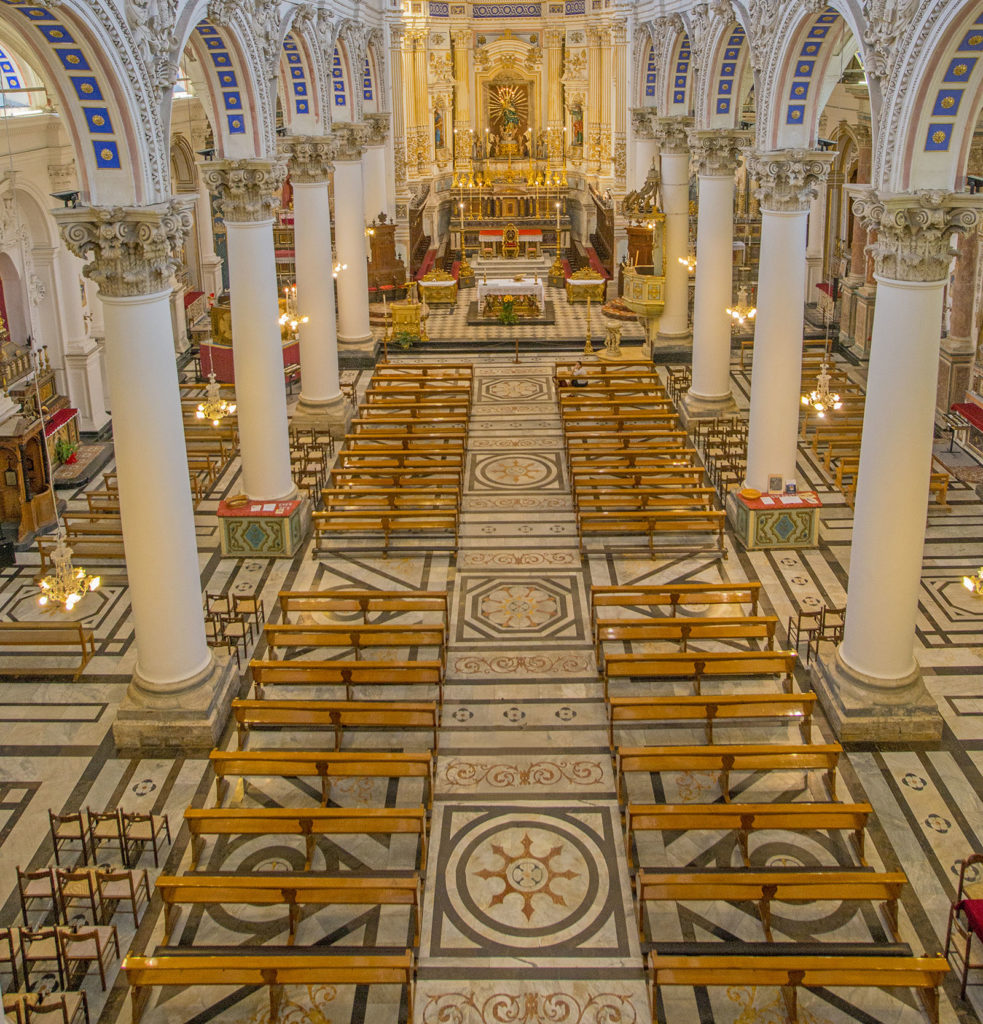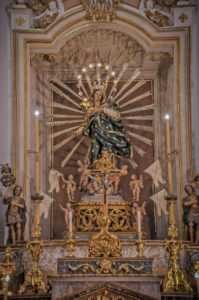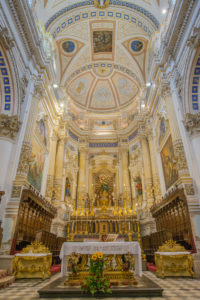The interior of the church is richly decorated and features a large number of precious works.
 In the sumptuous apse above the main altar stands the polychrome wooden statue of the Immaculate Conception, protected by a semicircle marked by columns between which are the two statues of St. Peter and St. Paul, housed in two Baroque-style niches.
In the sumptuous apse above the main altar stands the polychrome wooden statue of the Immaculate Conception, protected by a semicircle marked by columns between which are the two statues of St. Peter and St. Paul, housed in two Baroque-style niches.


The three wooden statues were made in 1772 by the Neapolitan artist Pietro Padula.
A large Murano glass
chandelier
illuminated the apse but unfortunately was destroyed when it was moved during some maintenance work.
Two sculptural masterpieces located in the right nave are worthy of special mention.
The Madonna of Trapani, a 16th-century marble statue, and the statue group of St. Peter and the Paralysed Man, a wooden work created in 1893 by Palermo-born sculptor Benedetto Civiletti.
On the main entrance stands the majestic organ composed of 3200 pipes and two keyboards dating back to 1924, made by the Polizzi brothers. The side entrance on the left houses a wooden statue of “Christ at the Column” depicted in a red skirt reminiscent of the Christ of Burgos.
The statue is inserted in a canopy-shaped litter finely finished with stucco and gilding.